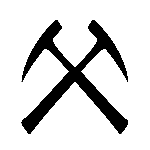25.2: Tectonic context
- Page ID
- 22794
\( \newcommand{\vecs}[1]{\overset { \scriptstyle \rightharpoonup} {\mathbf{#1}} } \)
\( \newcommand{\vecd}[1]{\overset{-\!-\!\rightharpoonup}{\vphantom{a}\smash {#1}}} \)
\( \newcommand{\id}{\mathrm{id}}\) \( \newcommand{\Span}{\mathrm{span}}\)
( \newcommand{\kernel}{\mathrm{null}\,}\) \( \newcommand{\range}{\mathrm{range}\,}\)
\( \newcommand{\RealPart}{\mathrm{Re}}\) \( \newcommand{\ImaginaryPart}{\mathrm{Im}}\)
\( \newcommand{\Argument}{\mathrm{Arg}}\) \( \newcommand{\norm}[1]{\| #1 \|}\)
\( \newcommand{\inner}[2]{\langle #1, #2 \rangle}\)
\( \newcommand{\Span}{\mathrm{span}}\)
\( \newcommand{\id}{\mathrm{id}}\)
\( \newcommand{\Span}{\mathrm{span}}\)
\( \newcommand{\kernel}{\mathrm{null}\,}\)
\( \newcommand{\range}{\mathrm{range}\,}\)
\( \newcommand{\RealPart}{\mathrm{Re}}\)
\( \newcommand{\ImaginaryPart}{\mathrm{Im}}\)
\( \newcommand{\Argument}{\mathrm{Arg}}\)
\( \newcommand{\norm}[1]{\| #1 \|}\)
\( \newcommand{\inner}[2]{\langle #1, #2 \rangle}\)
\( \newcommand{\Span}{\mathrm{span}}\) \( \newcommand{\AA}{\unicode[.8,0]{x212B}}\)
\( \newcommand{\vectorA}[1]{\vec{#1}} % arrow\)
\( \newcommand{\vectorAt}[1]{\vec{\text{#1}}} % arrow\)
\( \newcommand{\vectorB}[1]{\overset { \scriptstyle \rightharpoonup} {\mathbf{#1}} } \)
\( \newcommand{\vectorC}[1]{\textbf{#1}} \)
\( \newcommand{\vectorD}[1]{\overrightarrow{#1}} \)
\( \newcommand{\vectorDt}[1]{\overrightarrow{\text{#1}}} \)
\( \newcommand{\vectE}[1]{\overset{-\!-\!\rightharpoonup}{\vphantom{a}\smash{\mathbf {#1}}}} \)
\( \newcommand{\vecs}[1]{\overset { \scriptstyle \rightharpoonup} {\mathbf{#1}} } \)
\( \newcommand{\vecd}[1]{\overset{-\!-\!\rightharpoonup}{\vphantom{a}\smash {#1}}} \)

The cause of the Taconian Orogeny was a collision between two tectonic plates: the ancestral North American plate’s continental leading edge, and another plate of oceanic affinity, now deceased. The oceanic plate was one of the plates that floored the Iapetus Ocean, and as it moved toward the ancestral North American plate, the oceanic lithosphere that was part of the North American plate subducted, down and under the overriding plate of oceanic lithosphere. This resulted in a volcanic island arc, out in the middle of the Iapetus Ocean.
Part of the context of the orogeny is therefore on the ancestral North American continent, and part is out in the volcanic island arc. Rocks that formed in that island arc journeyed toward ancestral North America and accreted to the continent during the orogeny. Isotopic ages reflect this two part history: an initial crystallization from magma in the arc, and a later metamorphic age from the orogeny. The Port Deposit Tonalite, a metamorphosed granitoid, provides a nice example. Prior to the Taconian Orogeny, it was not yet metamorphosed: just a granitoid, under a volcano, moving along at a few cm per year, getting closer and closer to the Laurentian continental slope.


Prior to the orogeny, the edge of ancestral North America was a passive margin setting: it was the edge of the continent, but not the edge of the plate. Through the Cambrian and well into the Ordovician, there was no tectonic activity anywhere nearby, and there had not been for a very long time. Submerged under an epeiric sea, it was the site of limestone and dolostone deposition in a Bahama-like carbonate bank setting. Primary sedimentary structures such as ooids and stromatolites testify to shallow water depths. The proportion of clastic detritus such as clay and silt was quite low. There are abundant fossiliferous limestones from this time full of brachiopods, bryzoans and other common Paleozoic filter feeders, indicating clean water: a lack of excess runoff and sedimentation.
But not for long...
Did I Get It? - Quiz
What was the cause of the Taconian Orogeny?
a. The accretion of a volcanic island arc to the edge of ancestral North America
b. The collision between India and Eurasia
c. Hotspot volcanism
- Answer
-
a. The accretion of a volcanic island arc to the edge of ancestral North America
What was happening in eastern North America immediately prior to the Taconian Orogeny?
a. Passive margin sedimentation of carbonate strata
b. Erosion of lots of exposed basalt
c. Rifting related volcanism and sedimentation
- Answer
-
a. Passive margin sedimentation of carbonate strata
What was happening in the Taconian volcanic arc immediately prior to the Taconian Orogeny?
a. Rifting related volcanism and sedimentation
b. Passive margin sedimentation of carbonate strata
c. Subduction, arc volcanism, and build-up of an accretionary wedge
- Answer
-
c. Subduction, arc volcanism, and build-up of an accretionary wedge


